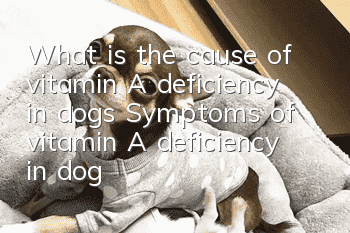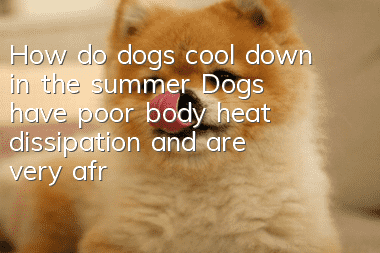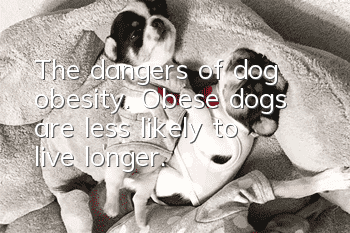What is the cause of vitamin A deficiency in dogs? Symptoms of vitamin A deficiency in dogs

What is the cause of vitamin A deficiency in dogs
Vitamin A is also called retinol. Vitamin A can promote animal growth, bone and tooth development, and improve immune function. If a dog is deficient in vitamin A, it will cause the dog to suffer from vitamin A deficiency.
The causes of vitamin A deficiency in dogs
1. Vitamin A deficiency in dogs is rare, but if they are fed a single feed with incomplete nutrition for a long time, or suffer from chronic gastroenteritis for a long time, vitamin A will be affected. Dogs that absorb it are prone to this disease.
2. Dogs during pregnancy and lactation need more vitamin A. If the vitamin A content in the food does not increase at this time, it will not only cause the dog to suffer from vitamin A deficiency, but also affect the growth and development of the fetus or puppies and their disease resistance. sex.
3. Fat in food can promote the digestion and absorption of vitamin A by the dog’s digestive tract. Therefore, when there is a lack of fat and protein in food, it can also lead to vitamin A deficiency in dogs.
Symptoms of vitamin A deficiency in dogs
1. Vitamin A deficiency in adult dogs manifests as anorexia, weight loss and sparse coat. In further development, hair follicle keratosis, increased dandruff, night blindness and dryness will appear. Eye disease, cornea thickening, turbidity, conjunctival inflammation, blurred vision, tears, and red discharge.
2. Due to changes in squamous epithelial cells, the surface of the cornea becomes dry and blood vessels appear. After secondary bacterial infection, the cornea develops ulcers and perforations.
3. Vitamin A deficiency in male dogs: testicular atrophy, few or no sperm in the semen.
4. Female dogs with vitamin A deficiency: severe estrus, mild estrus, pregnancy, but are prone to miscarriage or stillbirth. Even if they give birth to live offspring that are weak, they are also susceptible to respiratory diseases and have a low survival rate. Retained placenta is also common after delivery.
5. Young dogs that survive postpartum often have thickened skulls and vertebrae due to skeletal deformities. The foramen magnum narrows, compressing the cerebellum and spinal cord. Clinical manifestations include ataxia, tremors and spasms, and finally paralysis. All pups in the litter are affected, but the severity is different.
Prevention and treatment of vitamin A deficiency in dogs
1. Dogs suffering from vitamin A deficiency after weaning mostly die from secondary respiratory diseases. Refer to the vitamin A requirements of adult and growing young dogs, increase the supply of dogs during pregnancy and lactation, and promote the digestion and absorption of vitamin A.
2. Add the right amount of fat to your food. Strengthen the feeding of vegetables, carrots, yellow corn, milk, eggs, meat and other foods containing more vitamin A and carrots. If necessary, add an appropriate amount of cod liver oil to the food.
- What should you do if your dog loves to tear up the house? Your dog may have separation anxiety.
- Training your dog not to bite randomly - Notes on raising a good dog
- What to do if your dog doesn’t like wearing a collar? There are ways to wear a collar
- Can rabies be prevented? Rabies prevention and control technical guide
- The best age for golden retriever training to make your golden retriever a good baby
- Is it okay for dogs to eat leftovers? What are the effects of feeding leftovers to dogs?
- What do different dog postures mean? Understand the meaning behind the postures
- Do you know the distribution map of dogs in China?
- What do dogs pay attention to in spring? These things cannot be ignored
- Misunderstandings about raising dogs: These are the things you must know



